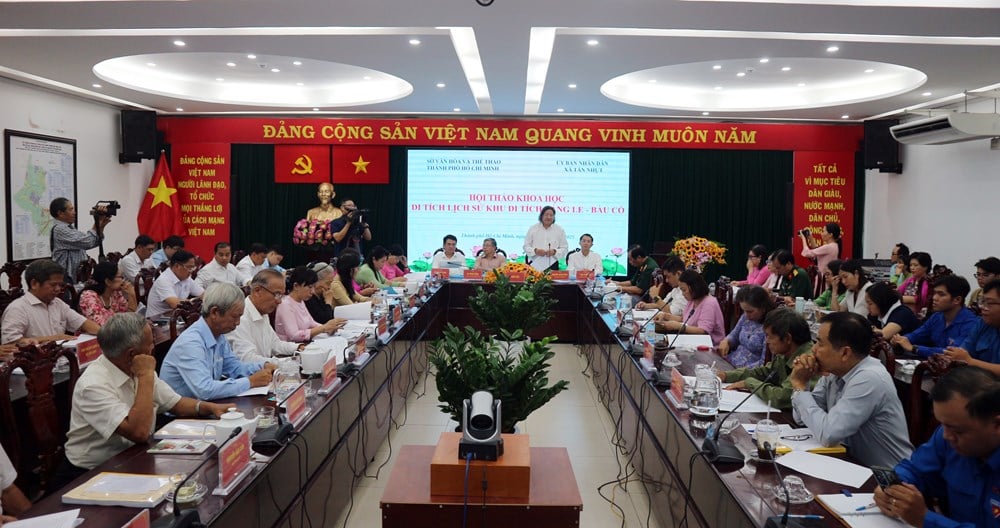 View of the scientific conference
View of the scientific conference On October 24, at Tan Nhut commune, the Department of Culture and Sports of Ho Chi Minh City coordinated with the People's Committee of Tan Nhut commune to organize a scientific workshop "Historical relic of Lang Le - Bau Co relic site".
Attending the workshop were experts, scientists, management agencies, Tan Nhut commune officials of different periods, representatives of the young generation and especially historical witnesses, family members and local people.
The land has a rustic name, but contains many layers of heroic historical sediments.
Mr. Lam Thieu Ky - Director of the Ho Chi Minh City Monuments Conservation Center said that the workshop was organized to clarify the historical value, scientific significance and scale of the event. At the same time, it proposed directions for preserving and promoting the value of the monument in contemporary life.
The research results, discussions and comments at the workshop will be an important basis for the Department of Culture and Sports to direct the Center for Monument Conservation to continue completing scientific records, propose national-level monument rankings, and at the same time improve the effectiveness of management, exploitation and promotion of heritage values.
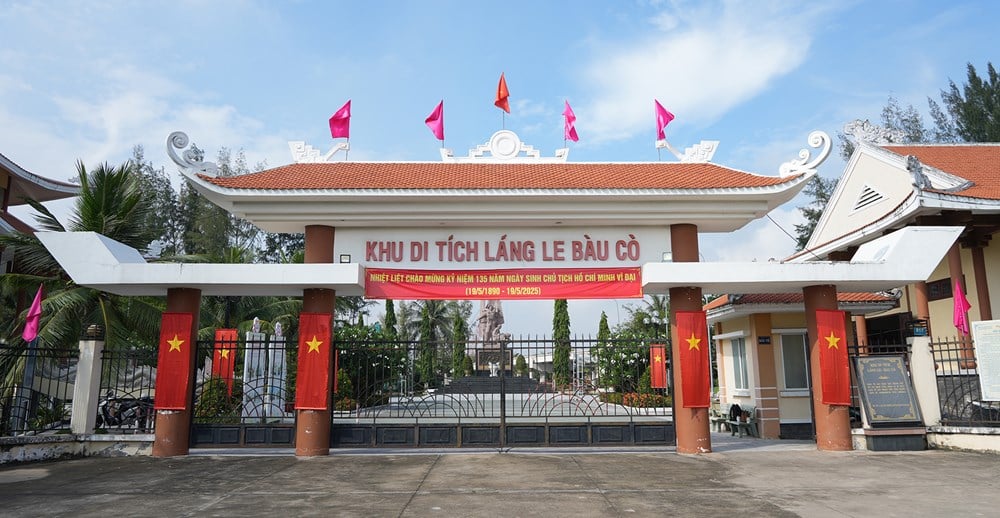
Lang Le – Bau Co is a land with a simple name, but contains many layers of heroic historical sediments. Since the 19th century, this place has been a fertile land, with crisscrossing rivers and canals, dense trees – a favorable location for resistance movements, and was once the base of the Great General of the West, Truong Dinh.
During the resistance war against the French, Lang Le – Bau Co was a strategic base of the army and people of Saigon – Cho Lon, where many major battles took place. On April 15, 1948, the resounding victory here defeated the French colonialists’ plan of “Speedy battle, speedy victory”, opening up a valuable lesson on the art of guerrilla warfare and the spirit of “using the weak to defeat the strong”, affirming the strength of military-civilian solidarity.
During the resistance war against the US, Lang Le - Bau Co continued to be the operating area of many key units such as Battalion 6 Binh Tan, Security T4, and Thanh Special Forces, playing a logistical role for the General Offensive and Uprising in the Spring of Mau Than 1968.
In 1988, on the occasion of the 40th anniversary of the Lang Le - Bau Co Victory, Binh Chanh District Party Committee built the Lang Le - Bau Co Victory Monument, and since then, April 15th of each year has been chosen as the Lang Le - Bau Co Victory Anniversary.
In 2003, Lang Le - Bau Co relic site was ranked as a City-level historical relic, becoming a red address for traditional education , honoring the resilient and indomitable spirit of the people of the South.
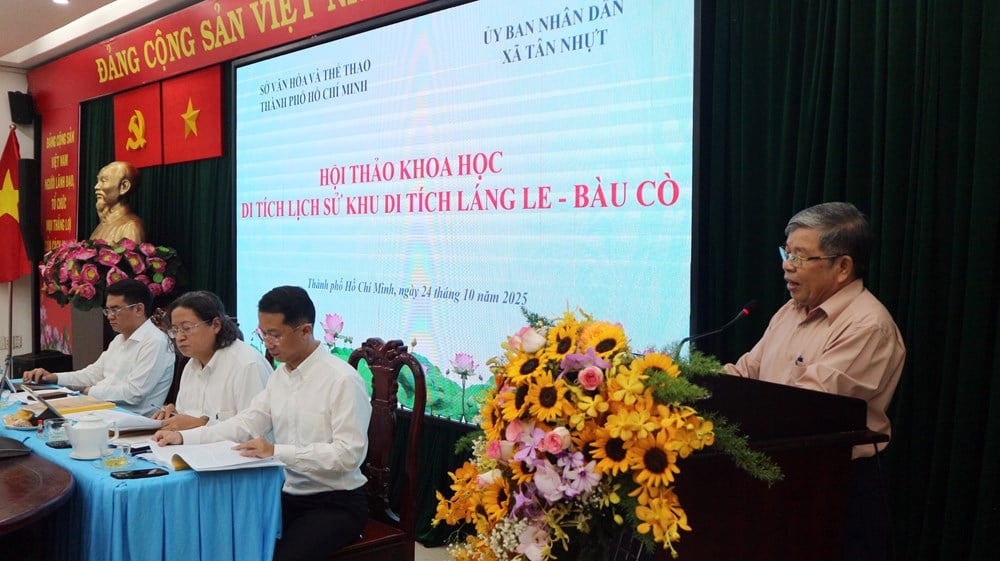
At the workshop, delegates emphasized the value and significance of Lang Le - Bau Co Relic Site, thereby affirming that the relic deserves to be ranked as a National Historical Relic.
Associate Professor Dr. Ha Minh Hong highlighted the special historical and cultural value of the land of Vuon Thom - Ba Vu, which used to be the revolutionary belt base of Saigon - Cho Lon during the two resistance wars.
He said that from the barren swamp area along the Vam Co Dong River, people reclaimed land, established villages, and created the space "Lang Le - Bau Co" - a place associated with many heroic feats.
This land not only bears the mark of heroic history but is also a symbol of vitality, revival and cultural identity of the South in the journey of preserving and promoting traditional values.
Associate Professor Hong said that the 30 years of protracted resistance war in the South turned each region into a part of the battlefield, where heroic vestiges became historical relics.
Lang Le – Bau Co from a natural site has become a historical symbol, connecting three resistance periods of the Southern region, becoming a cultural and historical heritage of Saigon – Ho Chi Minh City. He hopes that this place will continue to be a red address for traditional education and a living material for today’s cultural industrial products.
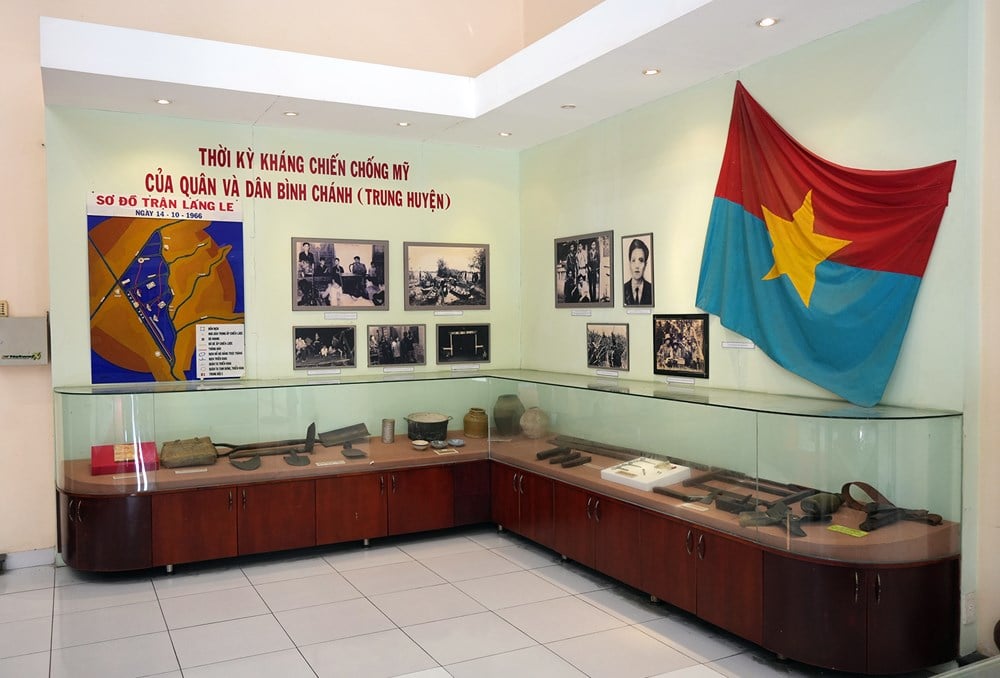
The battle of "Lang Le - Bau Co" clearly demonstrates Vietnamese military art.
According to Ms. Phan Thi Cam Hong, Deputy Head of the Party Building Committee of Tan Nhut Commune Party Committee: During the resistance war against France and the US, with a strategic location right at the gateway to the inner city of Saigon, the river, swamp, and marshland area of Lang Le - Bau Co in particular, and the Vuon Thom base area in general were the military bases of the leadership agencies of the South and Cho Lon province, and the area where armed forces from other places gathered to set up base in Lang Le - Bau Co before moving to Vuon Thom.
This is where many resounding victories took place, demonstrating the brave spirit of our army and people determined to protect the land that the enemy always considered a "thorn that needed to be removed".
“The Lang Le - Bau Co historical site is one of the sacred "red addresses" to commemorate and pay tribute to the cadres, soldiers and people who sacrificed their lives; it is a place to educate the younger generation about revolutionary traditions and patriotism,” she emphasized.
Analyzing the military art in the battle of "Lang Le - Bau Co", Major General Tran Van Trai, Deputy Commander of the Ho Chi Minh City Command, emphasized that this was not only a typical battle of the Southern resistance movement but also an "earthquake" that encouraged the fighting spirit of the people and soldiers of Saigon - Cho Lon - Gia Dinh, contributing to strengthening the belief in the long-term resistance line of the Party and President Ho Chi Minh.
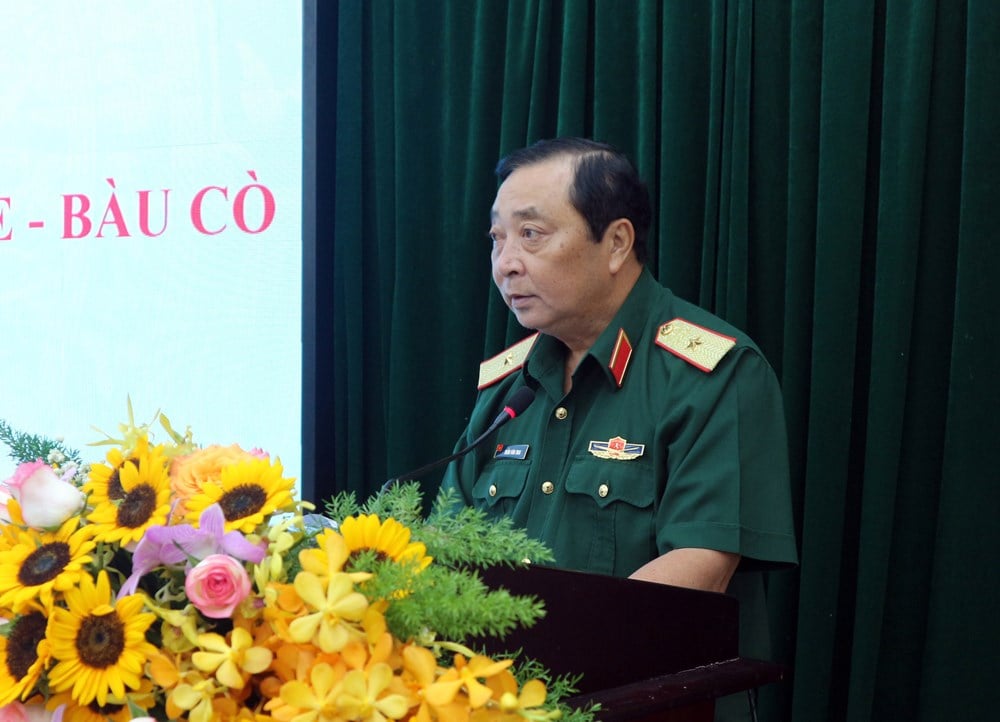
According to the Major General, the Lang Le - Bau Co battle clearly demonstrated Vietnamese military art with many values that remain meaningful until today.
That is, choosing flexible combat terrain, taking advantage of swamps and marshes to suppress enemy firepower; proactive offensive thinking, creating the element of surprise; skillfully combining guerrilla warfare and raids, promoting combined strength; blood ties between the army and the people, turning villages into fortresses; and closely combining politics and the military, affirming the strength of people's war.
From those valuable lessons, the Ho Chi Minh City armed forces now continue to apply them to training and exercises suitable for high-tech warfare, and at the same time consider this a "practical school" to educate revolutionary traditions, foster patriotism and responsibility in the young generation.
Major General Tran Van Trai said that in the context of globalization and non-traditional security challenges, preserving and promoting the military art values from historical battles such as Lang Le - Bau Co is of special importance.
The Ho Chi Minh City Command requested the relevant agencies to advise the City People's Committee to submit to the Ministry of Culture, Sports and Tourism to rank the Lang Le - Bau Co historical relic at the national level, in order to preserve, promote values and educate traditions for future generations.
“The victory of Lang Le – Bau Co is a testament to the invincible strength of people’s war, to the Vietnamese military art in the Ho Chi Minh era. Preserving and promoting that value means preserving the source of strength, confidence and mettle of the City’s armed forces in all situations,” Major General Tran Van Trai emphasized.
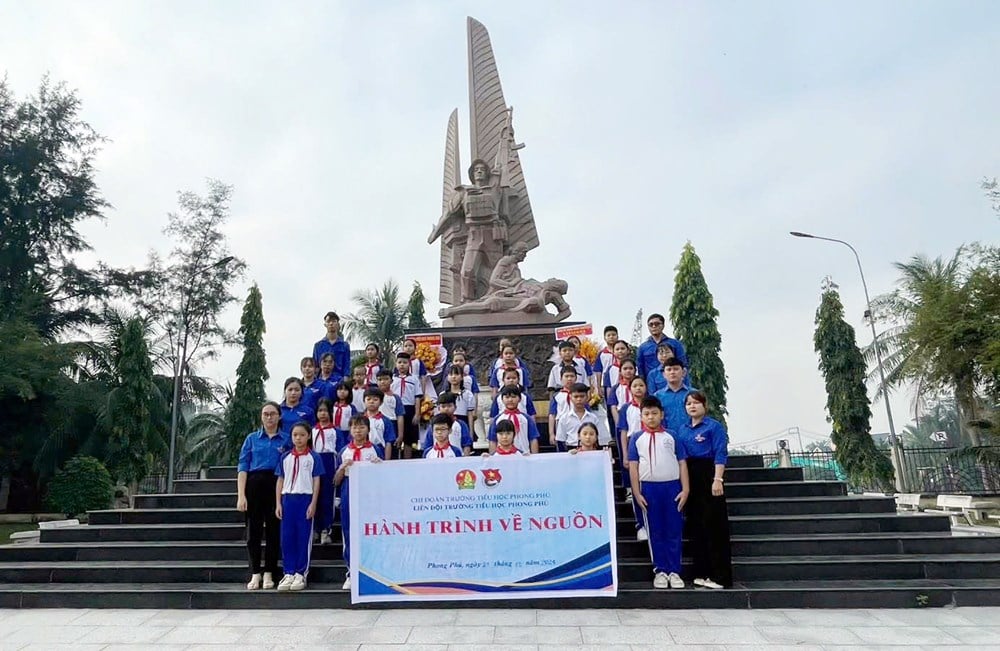
It is necessary to continue to innovate methods of promoting and introducing relics to the public.
Ms. Phan Thi Cam Nhung, Standing Deputy Secretary of the Tan Nhut Commune Party Committee, said that over the years, the relic site has become a familiar destination for activities related to the source and patriotic education of Party organizations, unions, students and youth in the area.
“Based on the results of the workshop, the Tan Nhut Commune Party Committee will continue to direct the completion of scientific documents, coordinate with the Department of Culture and Sports of Ho Chi Minh City, the Center for Monument Conservation and specialized units to soon submit to competent authorities for consideration and recognition of Lang Le - Bau Co as a national historical relic.
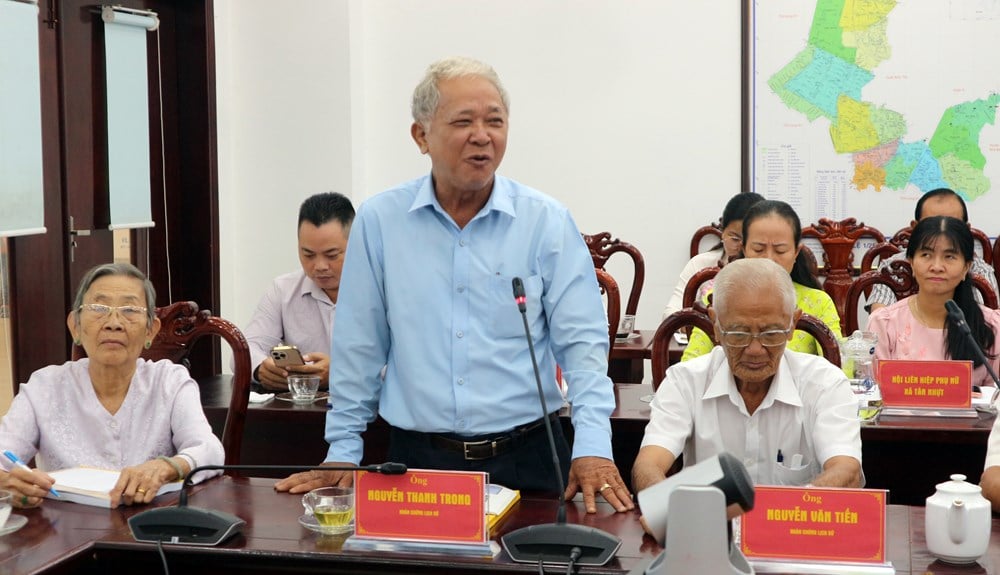
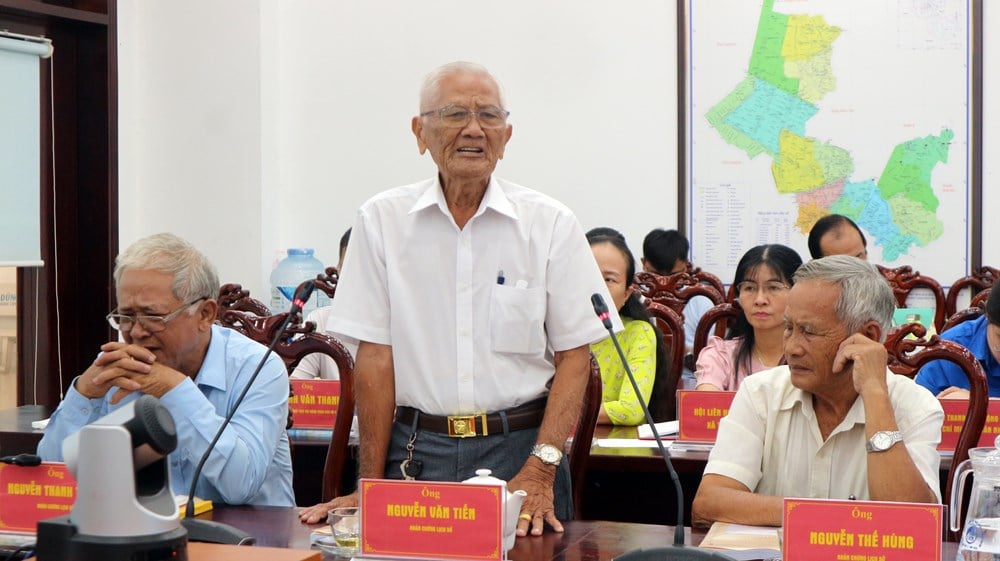
At the same time, the locality will strengthen propaganda and education on revolutionary traditions, invest in improving landscapes and infrastructure, and combine relic conservation with the development of community cultural and ecological tourism," Ms. Phan Thi Cam Nhung emphasized.
According to Ms. Nhung, preserving and promoting the value of the relic site is not only a tribute to the past, but also an investment for the future, contributing to educating patriotism for the young generation, while promoting local socio-economic development.
In his closing speech, Mr. Nguyen Minh Nhut - Deputy Director of the Department of Culture and Sports of Ho Chi Minh City emphasized that the Conference took place in the atmosphere towards the 85th anniversary of the Southern Uprising (November 23, 1940 - November 23, 2025) and the 20th anniversary of Vietnam Cultural Heritage Day (November 23).
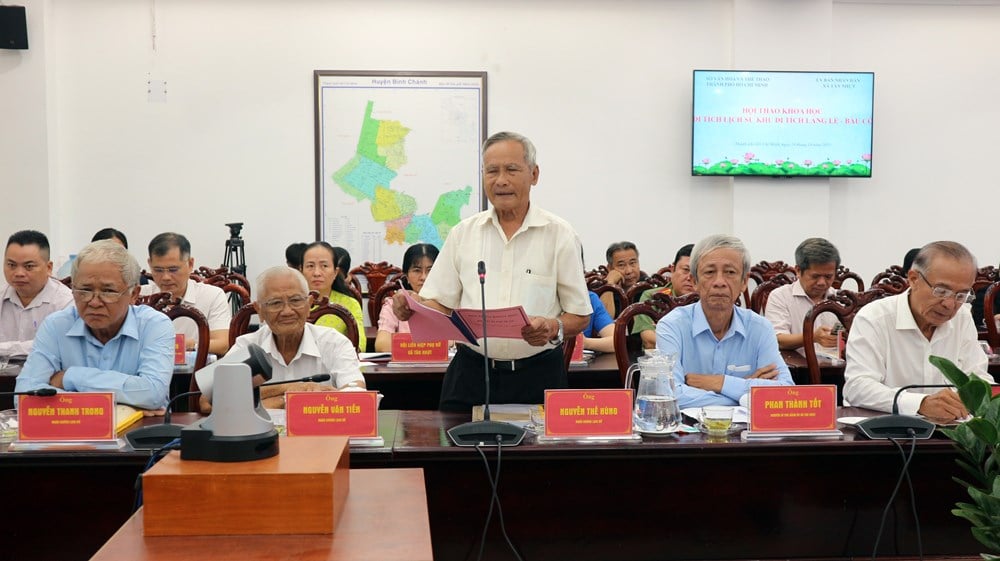
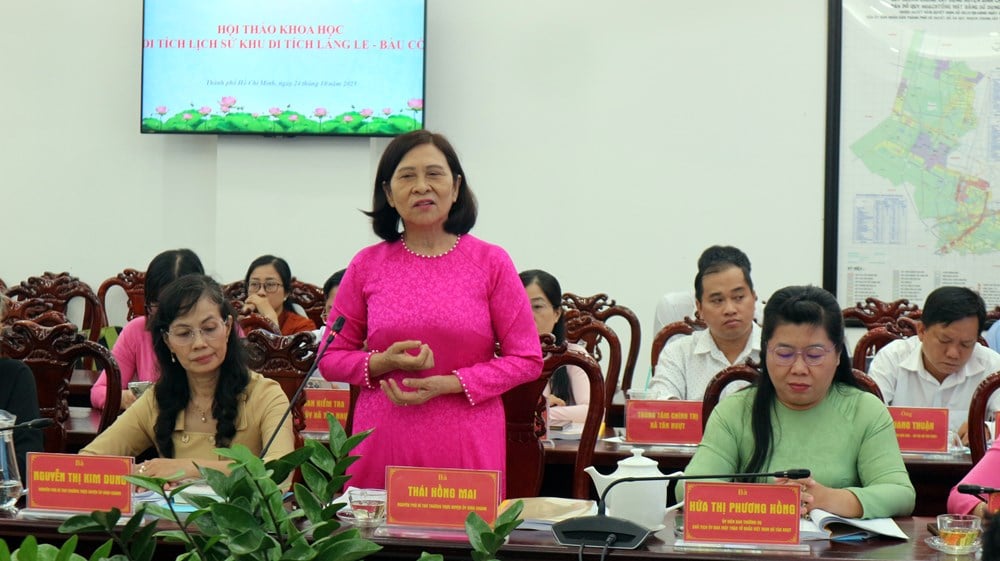
According to Mr. Nguyen Minh Nhut, on November 23, 1945, President Ho Chi Minh signed Decree No. 65, affirming the important role and position of heritage conservation, laying the foundation for activities to preserve and promote the value of national folk tales to this day.
Mr. Nhut said that this is the second scientific conference held in Binh Chanh - a land rich in revolutionary tradition.
Previously, the Department organized a scientific seminar on the Vinh Loc Fire Line Civilian Relic Site. Currently, both the Vinh Loc Fire Line Civilian Relic Site and the Lang Le - Bau Co Relic Site have been ranked as city-level relics by the Ho Chi Minh City People's Committee. The Department is completing the dossier to submit to the Ministry of Culture, Sports and Tourism for national-level ranking for these two relic sites.
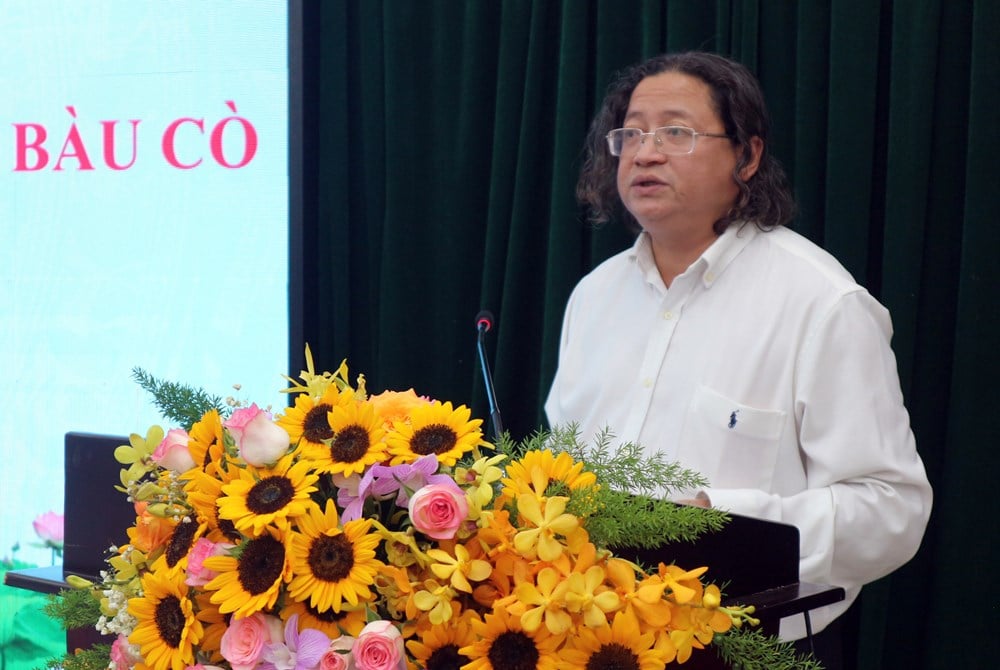
According to the Organizing Committee, opinions at the Workshop clarified the historical value and strategic position of the Lang Le - Bau Co base, which is the "connection" between the Eastern and Western regions of the South, where many major battles took place in the two resistance wars against France and American imperialism...
Thereby, the discussions affirmed that the relic is a vivid proof of the strength of people's war, the bond between the army and the people, contributing many valuable lessons on military art and the tradition of solidarity and resilience of the Southern people.
Mr. Nguyen Minh Nhut requested the Department of Cultural Heritage and the Ho Chi Minh City Monuments Conservation Center to continue to coordinate with the People's Committee of Tan Nhut commune and related agencies and units to complete the scientific dossier, submit it to the Monument Appraisal Council before November 15, and proceed to propose the ranking of a national historical and cultural relic.
While waiting for approval, relevant units need to continue to innovate methods of promoting and introducing relics through the application of digital technology, virtual reality, historical storytelling and the creation of literary and artistic works based on local documents, in order to spread the value of heritage to the public, especially the youth.
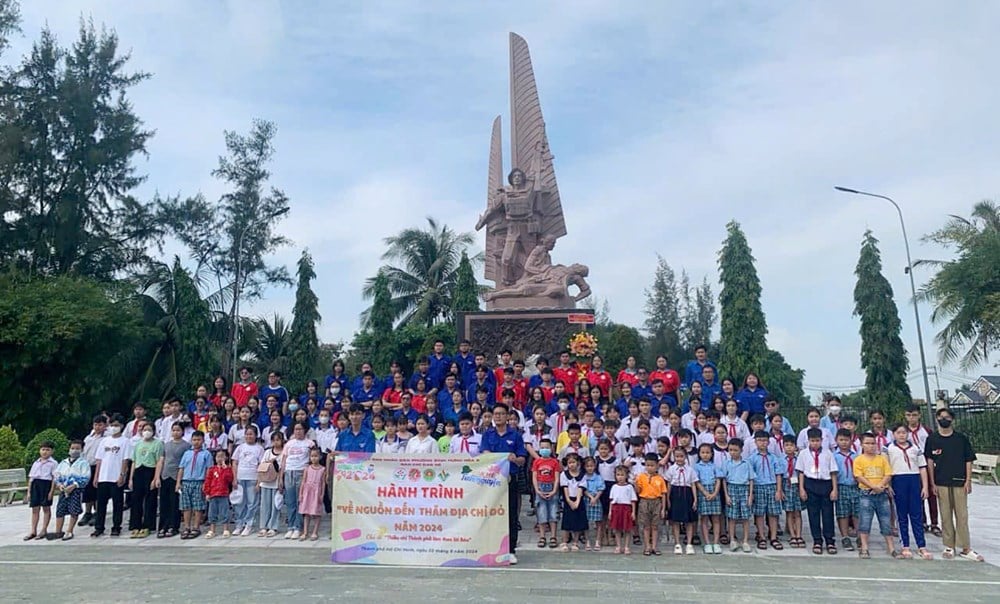
The Deputy Director of the Department of Culture and Sports of Ho Chi Minh City expressed his gratitude to historical witnesses, families with meritorious services and the team of scientists who have accompanied the research work, contributing to affirming the worthy position of Lang Le - Bau Co in the system of 321 historical - cultural relics of Ho Chi Minh City, towards registering the relic on the national heritage map.
Source: https://baovanhoa.vn/van-hoa/de-xuat-xep-hang-quoc-gia-khu-di-tich-lang-le-bau-co-176792.html



![[Photo] Solemn funeral of former Vice Chairman of the Council of Ministers Tran Phuong](https://vphoto.vietnam.vn/thumb/1200x675/vietnam/resource/IMAGE/2025/10/24/1761295093441_tang-le-tran-phuong-1998-4576-jpg.webp)
![[Photo] President Luong Cuong chaired the welcoming ceremony and held talks with United Nations Secretary-General Antonio Guterres](https://vphoto.vietnam.vn/thumb/1200x675/vietnam/resource/IMAGE/2025/10/24/1761304699186_ndo_br_1-jpg.webp)
![[Photo] Prime Minister Pham Minh Chinh and South African President Matamela Cyril Ramaphosa attend the business forum](https://vphoto.vietnam.vn/thumb/1200x675/vietnam/resource/IMAGE/2025/10/24/1761302295638_dsc-0409-jpg.webp)

![[Photo] Prime Minister Pham Minh Chinh chairs conference on breakthrough solutions for social housing development](https://vphoto.vietnam.vn/thumb/1200x675/vietnam/resource/IMAGE/2025/10/24/1761294193033_dsc-0146-7834-jpg.webp)
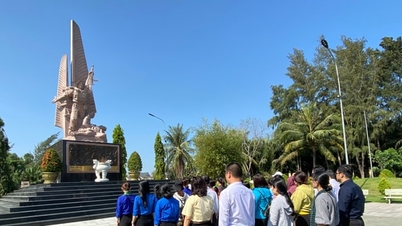

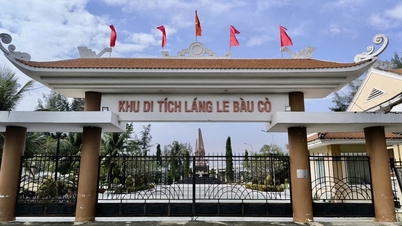

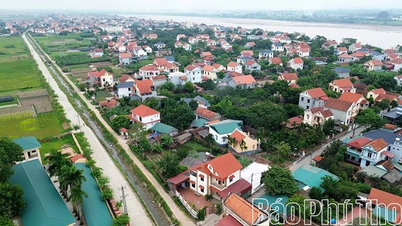

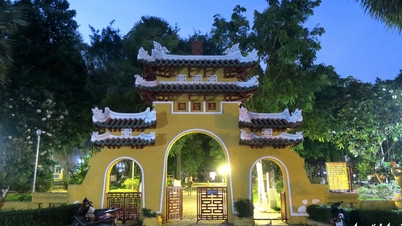



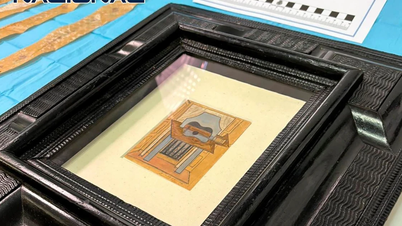

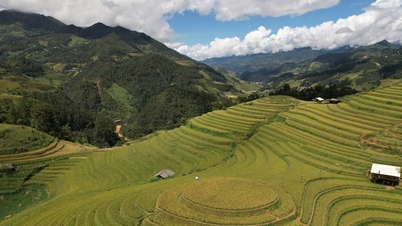

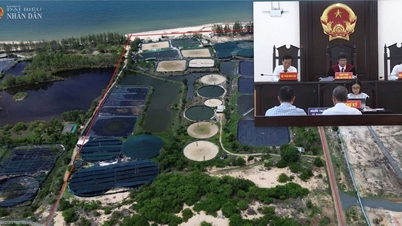
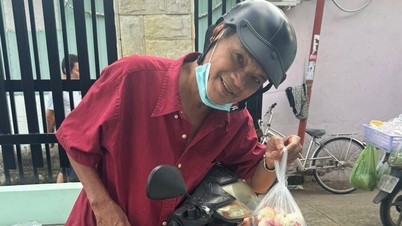

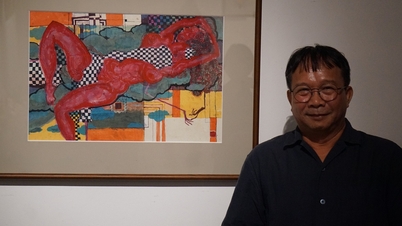
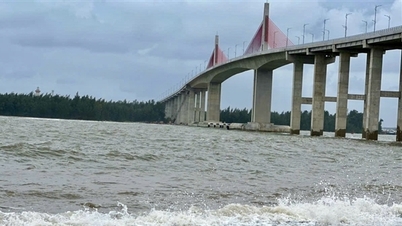















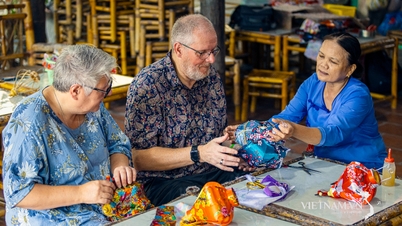

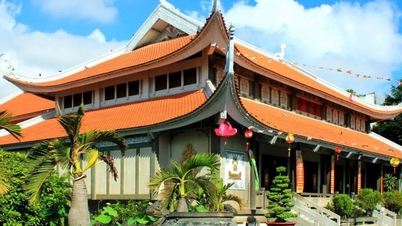

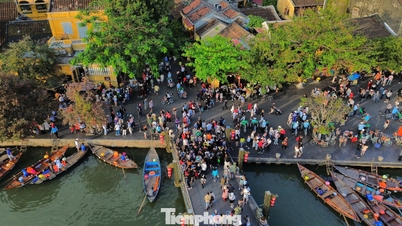

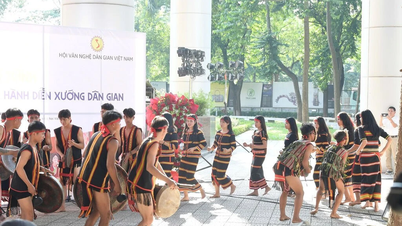






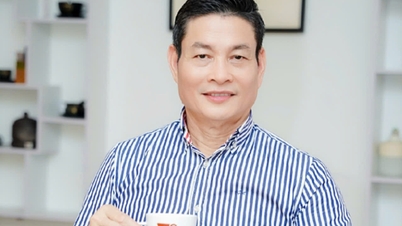
















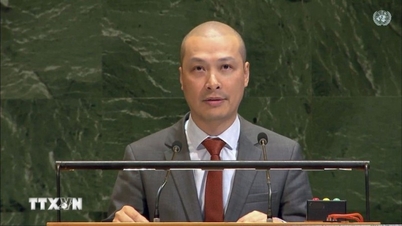
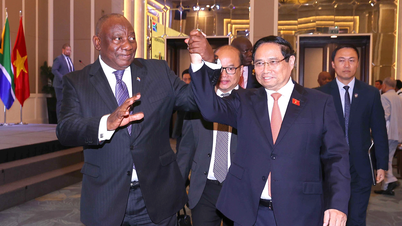

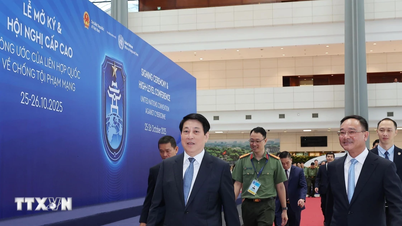

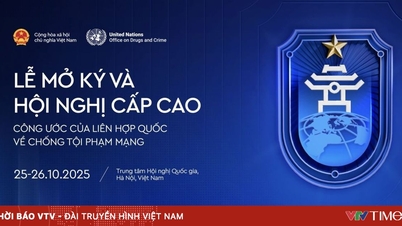



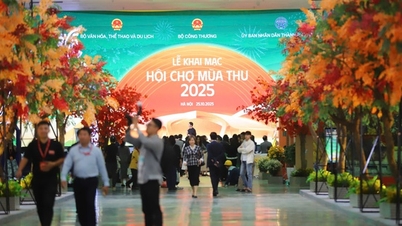
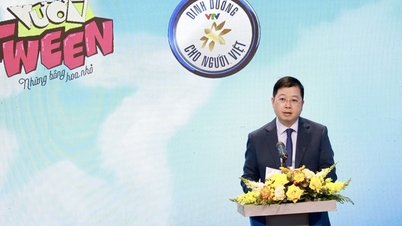
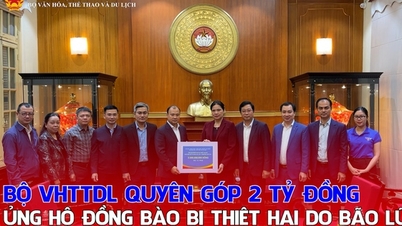
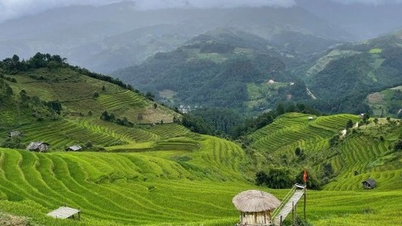




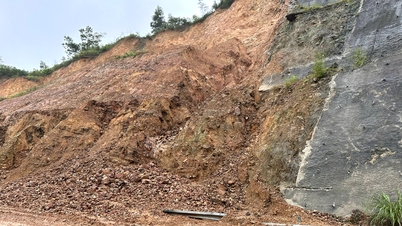

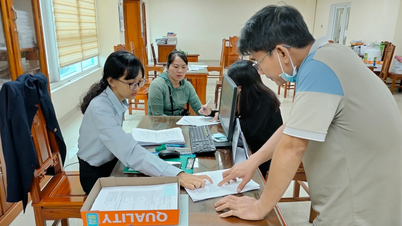


















Comment (0)